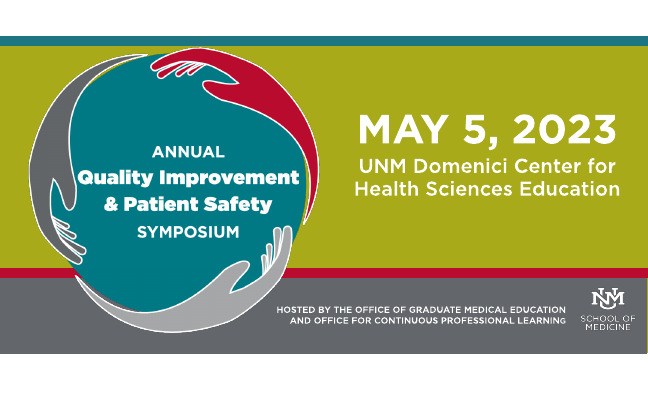Document Type
Poster
Publication Date
5-21-2021
Abstract
Background/Introduction
Phototherapy is a safe and effective treatment modality for numerous common and uncommon dermatologic conditions in children and adult population.1,2 Most phototherapy protocols use non-ionizing ultraviolet (UV) radiation of different wavelengths, such as broadband UVB (290-320 nm), narrowband UVB (311-313 nm), 308 nm excimer laser, UVA 1 (340-400 nm), UVA with psoralen (PUVA), and extracorporeal photochemotherapy (photopheresis).3 Dermatoses that may benefit from artificial UV light phototherapy include psoriasis, atopic dermatitis/eczema, generalized pruritus, cutaneous T-cell lymphoma, morphea, vitiligo.1,2,4-8
This is particularly relevant to the University of New Mexico Hospital, which houses one phototherapy booth at the Department of Dermatology and evaluate over 20,000 patients annually (Cerner/UNM data)10. Conventionally, patients referred by Dermatology for phototherapy are started on a regimen based on the specific dermatoses and their Fitzpatrick skin type. However, studies have shown that human skin sensitivity to UV radiation is influenced by the varying degrees of skin pigmentation, thickness, genetic differences, and other factors.11,12 In addition, skin typing is imprecise.13,14 Phototesting is a technique that evaluate the skin sensitivity to UV radiation by determining the lowest dose of UV radiation that will elicit erythema or minimal erythema dose (MED) within a few hours following exposure.11,15-22 Therefore, MED serves as a dosing gauge to deliver appropriate phototherapy that is not suboptimal and that would not burn/harm the patient. Barriers to office-based phototherapy include frequent travel and costs.
The objective of this study is to obtain MED to establish an individualized precise, safe and efficacious starting treatment dose of UV light phototherapy that would result in better utilization, more healthcare accessibility, provide a cost-effective reduction in travel distance and associated expenses for patients in New Mexico.
Methods
A total of 10 volunteers, age 18 or older, with Fitzpatrick skin phototype I to VI who meet the eligibility criteria will be recruited. Each participant will be involved in 2 study visits 24 hours apart. On day 0, the target treatment area (inner forearm) area will be photographed prior to treatment. A disposable patch (DosePatch, Daavlin) with 6-open windows will be applied to the target treatment area. The windows will be sequentially opened for 3-4 minutes (depending on the skin type) to provide variable amount of non-ionizing UV. On day 1, the area will be photographed and objectively and quantitatively assessed for redness using a non-invasive spectrophotometer as colorimeter.
The MED value will be compared within each participant (who are their own control) to that of the current UV dosing protocol. In addition, the differential in cost of travel based on the 2 alternatives (calculated MED and the current conventional UV dosing protocol) will be calculated.
Results or Expected Outcome
10 volunteers (2 males, 8 females) with mean age of 38.4 (24-62 years old) years and skin types I (1/10), II (2/10), III (3/10), IV (2/10), V (1/10) and VI (1/10). Estimated MEDs were much higher for darker skin types (IV-VI), translating to higher initial dosage for phototherapy.
None of the patients experienced a burn. Treatment duration was overall shorter with the MED testing compared to conventional dosing protocol in both atopic dermatitis and psoriasis treatment.
Conclusion or Discussion
Phototesting’s advantages include accurate and objective determination of initial dosage for phototherapy. Phototherapy is a well-established option for the treatment and maintenance of both common and uncommon dermatologic diseases.4-9 Since UNM is only equipped with one phototherapy unit that serves thousands of patients, MED pre-testing can optimize phototherapy regimen, minimize risk of burning, reduce patient travel and related expenses, lead to faster therapy, without compromising patient’s safety and maximizing the use of limited facility resources at UNM.
Keywords: phototherapy, phototesting, minimal erythema dosing, narrow band UVB
Authors: Catherine N. Tchanque-Fossuo, MD, MS1; Melanie T. Garcia, BSN, RN1; Adam W. Crosby, MSN, RN1; Taylor Thomas, PhD2; Therese Holguin, MD1
Affiliations: 1. Department of Dermatology, University of New Mexico, Albuquerque, NM
2. Department of Physics & Astronomy, Northern Arizona University
Recommended Citation
Tchanque-Fossuo, Catherine N.; Melanie T. Garcia; Adam W. Crosby; Taylor Thomas; and Therese Holguin. "Implementation of Minimal Erythema Dose Testing to Optimize Phototherapy Delivery." (2021). https://digitalrepository.unm.edu/hsc_qips/67


Comments
Presented at the University of New Mexico GME/CPL 2021 Annual Quality Improvement and Patient Safety Symposium.